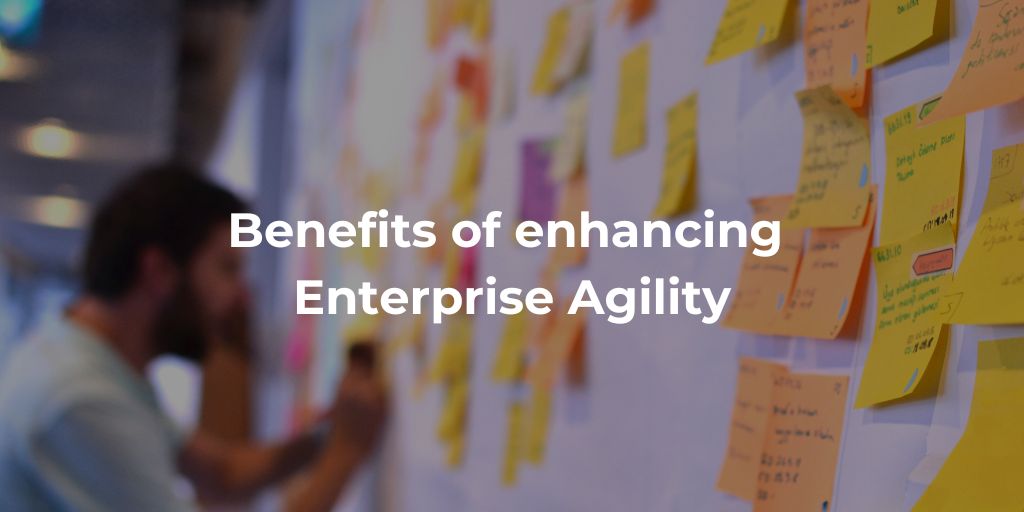Categories
Tags
Newsletter
Subscribe to the QRP International neswletter and get all the news on trends, useful contents and invitations to our upcoming events
Subscribe
Organisations do not change — people do. That is the truth behind every transformation effort, every shift in strategy, and every push for Agility. It is not new tools or frameworks that make an organisation more adaptable—it is mindset, leadership, and culture.
The Project Management Institute’s (PMI) report ‘A New Era for Enterprise Agility’ reinforces this idea. It shows that Enterprise Agility is not just about doing Agile—it is about being Agile across the entire organisation. The most successful enterprises are not just using Agile methods on select projects; they are building a culture where teams are empowered, where ways of working are flexible and PMOs act as strategic enablers rather than gatekeepers.
This is not easy. It requires a deep cultural shift, ongoing commitment from leadership, and a willingness to rethink how value is delivered. But as the PMI Report makes clear, those who invest in this shift are seeing real results—across industries.
Agility can be applied on all levels of the organisation. There are multiple frameworks that can be used across different teams to provide structure and valuable techniques. Scrum works great on a team level. AgilePM offers a solution for an Agile approach to Project Management and SAFe helps organisations achieve business Agility.
Every single one of these approaches can help lead a transformation towards an overall more Agile organisation. But true Enterprise Agility extends far beyond simply adopting these approaches. The PMI report emphasizes that Enterprise Agility is not merely a methodology; it is a fundamental capability that defines an organisation’s resilience and ability to adapt to constant change. Achieving this requires a profound cultural shift, ensuring that the individuals applying these approaches recognize and embrace their inherent value.
This cultural shift enables more than productivity—it enhances project performance, improves alignment with business strategy, and reduces risk. In fact, PMI’s data shows that high-Agility companies consistently outperform low-Agility ones on key metrics like project success rates, scope control, and budget adherence.
According to the PMI report, high-Agility organisations share a common foundation: leaders who do not just talk about Agility, but actively enable it. These are executives who communicate strategy clearly, empower teams to make decisions, and create space for experimentation and continuous improvement.
Agility works best in environments where people feel trusted to take ownership of their work—and safe enough to challenge the status quo. That means building a culture grounded in psychological safety, open communication, and shared purpose.
The PMI report highlights that leadership commitment is critical in three key areas:
As PMI puts it, “Agility is not a methodology; it’s a core capability.” And that capability is built not just through systems and processes, but through the example set by leadership and the culture they nurture every day.
Once seen primarily as enforcers of governance and process compliance, today’s most effective PMOs are strategic enablers—key drivers of Enterprise Agility.
According to PMI’s Report, high-Agility organisations are significantly more likely to have a PMO in place. But it is not just their presence that matters—it is what they do. These PMOs are no longer just monitoring scope, schedule, and budget. They are:
This enterprise-wide view gives the modern PMO a unique position: they can act as a connector between high-level strategic planning and on-the-ground execution. It helps leadership make data-informed decisions, equips teams with flexible tools, and fosters a culture of continuous learning.
Here is an example of how an Agile PMO embraces, inspects and adapts.
PMI’s Report highlights how Agility is evolving across different sectors:
Change is no longer an event—it is a constant. PMI’s report makes it clear: successful organisations are those that prepare for change before it arrives.
Enterprise Agility is not a trend—it is a strategic capability. As the PMI report shows, organisations that embed Agility into their culture, leadership, and ways of working are better equipped to navigate complexity and deliver lasting value. Whether through empowered teams, adaptive PMOs or forward-thinking leadership, the goal is clear: prepare continuously, not react occasionally.